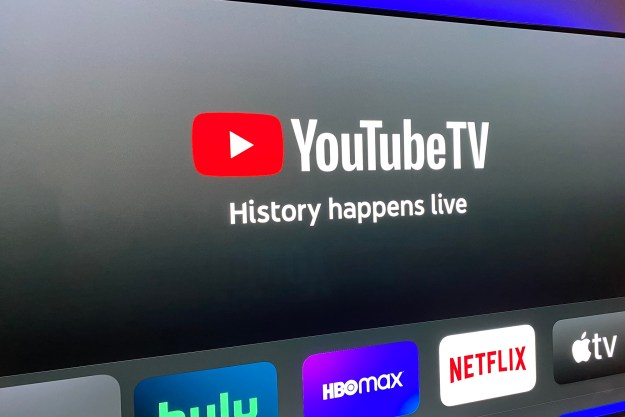
But there are significant problems with that path. Entry-level jobs don’t pay well, so if you have a family to support, that isn’t a real option. Making short films with analog equipment is very expensive and time consuming. And that move to Los Angeles? Probably the biggest hurdle of all for most people.
Making a Web video is no longer merely a good way to get noticed, it’s now practically mandatory.
That’s how I did it, but technology would have made my path very different today. Maybe tougher. While YouTube and Twitter seem like they should make life easier for today’s budding talent, that’s not always the case.
Twelve years ago, I was just a guy working in Florida politics who dreamt of a career as a TV writer. I moved to L.A. to attend film school at the University of Southern California. As a grad student, I did multiple internships and upon graduating, I took any job in television I could get, waiting for the chance when someone – anyone — would see how hard I was working as an assistant and give me an opportunity to flex my creative muscles. I got lucky and that’s exactly what happened … eventually.
I got paid to write my first episode of television in 2006 – the same year that Google bought YouTube, and the year that Time, citing the explosion of user-generated content, declared their Person of the Year to be “You.”
The growth of sites like YouTube and Vimeo suddenly gave anyone with a camera a worldwide audience. And the cameras themselves got a whole lot better, too. High-definition video became affordable on a consumer budget, and relatively inexpensive iMacs became full-blown non-linear editing stations. You no longer needed many thousands of dollars and exposure at Sundance to parlay a cool short film into work for a major studio.
Take the case of Seth Worley. In 2011, he made a short film called Plot Device (if you haven’t seen it, you must go watch RIGHT NOW), a film that would’ve been unproduceable on its budget just a few years earlier. Not long after Plot Device went online, Worley was flying to L.A. to meet with agents. After J.J. Abrams saw Plot Device, Worley got a chance to work with Abrams’s production company on a series of commercials related to Star Trek Into Darkness. Did I mention Worley did all this from Nashville?
Then there’s Lucas Cruikshank, better known to the Internet as helium-voiced “Fred.” He transformed his exposure on a popular YouTube channel – the first to reach one million subscribers – into a multiple Nickelodeon movies and two different TV series (so far). And he did it from Nebraska.
Justin’s career took off while he was living at home with his parents in San Diego.
And any collection of Internet-to-Hollywood success stories would be incomplete without Justin Halpern, creator of the Shit My Dad Says Twitter feed, which turned into a book, then a TV series. He and his writing partner Patrick Schumacker now have a thriving career as TV writers. Oh, and Justin’s career took off while he was living at home with his parents in San Diego.
Tech and social media proved to be true game changers, providing visibility to talented people that’d otherwise be missed.
Unfortunately, the pendulum appears to now be swinging the other way.
Technology has done such a good job lowering the barrier to entry… the barrier is now gone almost entirely. Making a Web video is no longer merely a good way to get noticed, it’s now practically mandatory, especially in comedy. A good script is no longer enough. I know of producers who, when hiring comedy writers, strongly consider their Twitter feeds. A social-media presence is no longer something that can help get you noticed, but it can now be a liability if your strength as a writer isn’t found in 140 character snippets.

Another factor lessening the value of digital content: The signal-to-noise ratio on the Internet has gotten way out-of-whack. It’s getting harder to distinguish between viral static and content that’s truly deserving of one’s attention. The bar for success on the Web is no longer a thousands of views (as it was a several years ago), or even millions of views (as it was pre-Gangham style). To be considered an undeniable viral sensation in 2014 and beyond, you need an ungodly amount of luck.
There is so much competition for people’s time on the Internet, we’ve essentially returned to the analog days, where observable talent has once again taken a backseat to other factors and ultimately, a lucky break. Just ask Alex from Target.
Further complicating matters – the novelty of the Internet has worn off and not all Hollywood deals with Internet stars have been fruitful. Though Shit My Dad Says was great for careers of Halpern and Schumacker (and deservedly so), its short lifespan on CBS wasn’t so great for other popular Twitter accounts hoping to get the Hollywood treatment. In May of 2013, FX bought a pitch based on the life of Ray William Johnson, one of the most popular personalities on YouTube. The project never made it past the pitch stage. Social media is still a good way to document your skills, but it’s no longer the shiny new thing in town.
It’s getting harder to distinguish between viral static and content that’s truly deserving of one’s attention.
Since anyone, anywhere can now compete for Hollywood’s attention, there is more competition than ever for the few actual jobs that Hollywood has to offer. “Breaking in” has never been harder, actually, than it is today. But that’s OK, because there’s one key difference between entertainment in 2004 and entertainment in 2014: You no longer need the backing of Hollywood to entertain people across the globe and make a living doing so.
Ray William Johnson might not have his own show on the FX network, but he still has 11 million subscribers to his YouTube channel and that’s amazing – not to mention amazingly lucrative. Disney didn’t spend a minimum of $500 million on the Maker Studios network of Web channels simply to translate all that content into Disney-produced shows. No, they paid that much because Maker Studios has accumulated over a billion views across their network, and that kind of reach is invaluable by any standard. In the span of a few short years, the Internet went from the minor leagues for film and TV to being a side industry, fully viable in its own right.
For a brief period in the 2000s, the ability to produce desirable content on the Web served mostly as an ideal calling card for a career in Hollywood — a way to easily differentiate yourself from the masses. That may no longer be the case, but who needs Hollywood now that online entertainers can forge lucrative careers without leaving the Web?
Editors' Recommendations
- Max is now available to watch on YouTube Primetime Channels
- YouTube NFL outage: Should Google give refunds or credits?
- YouTube with a blank home screen is a beautiful place
- YouTube tries new way of tackling ad blockers
- YouTube TV password sharing — is that even a thing?


